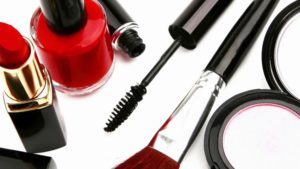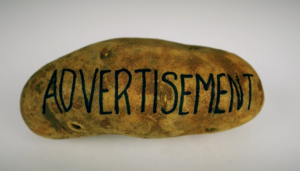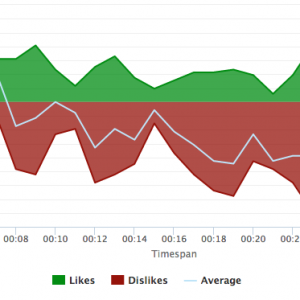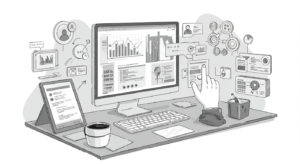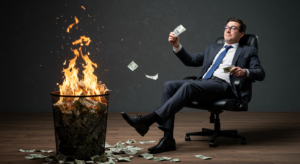Interviews with Innovators: Dr. David Robinson
 As part of our Innovator Interview Series, every month Spot Trender interviews Marketing/Advertising innovators on the future of data-driven marketing to learn the latest theories, principles, and mindsets that work. We also ask these experts for tips and stories on how to implement these ideas successfully. This month we had the pleasure to interview with Dr. David Robinson, one of the top marketing experts in the Bay Area, and a Senior Lecturer at UC Berkeley’s Haas School of Business. Before teaching at Cal, Dr. Robinson taught Marketing at Stanford and ran a successful marketing consulting firm for retail, banking, and non-profit. As a well-published author, Dr. Robinson’s works on innovative pricing strategies, customer segment/feedback loop, and customer loyalty are taught in top business schools around the world.
As part of our Innovator Interview Series, every month Spot Trender interviews Marketing/Advertising innovators on the future of data-driven marketing to learn the latest theories, principles, and mindsets that work. We also ask these experts for tips and stories on how to implement these ideas successfully. This month we had the pleasure to interview with Dr. David Robinson, one of the top marketing experts in the Bay Area, and a Senior Lecturer at UC Berkeley’s Haas School of Business. Before teaching at Cal, Dr. Robinson taught Marketing at Stanford and ran a successful marketing consulting firm for retail, banking, and non-profit. As a well-published author, Dr. Robinson’s works on innovative pricing strategies, customer segment/feedback loop, and customer loyalty are taught in top business schools around the world.
Key topics: Trends in Marketing/Advertising in 2018, how to achieve breakthrough for your personal and business brands, and what we can do to tackle increasingly high customer acquisition costs. Enjoy!
Q: What trends do you see in Marketing for 2018?
In Marketing, the big picture is people are going to wake up and smell the cost. This applies to companies big and small. On the big side, There are big companies that are more than ten years old, and they’ve never been profitable, like Uber and Twitter. On the smaller side, for instance, there was a startup called Spoonrocket that promised to deliver a hot meal under 10 minutes, for less than $10. UC Berkeley students loved it. The problem is we have to take into account the full cost of the product. We know there are massive consumer demands at $10/meal. However, when you look at the total cost of making the food, delivery, etc. it would probably be around $14. You can never achieve profitability if your costs exceed what people are willing to pay. People are going to have to pay close attention to month-to-month, quarter-to-quarter cash flow. They will have to make their advertising dollars accountable. Reigning in Customer Acquisition Cost is going to be a big theme in 2018.
This leads to the topic of data-driven marketing. I’m shocked by how much is done where people don’t measure the effect. When asked to evaluate the marketing effectiveness, often there is a lot of hand waving, like “We do a lot of things in this area, how do we attribute purchase to XYZ?” My macro is that research tools are out there, but people still don’t do it.
Q: On measuring the effect of marketing budget – for companies that traditionally haven’t been leveraging on data, how would they start?
Start small. For instance, stop advertising in a small area for a month to see how it affected your sales the following months. Next, double the advertising budget in that area to see if sales went up, and by how much. I understand it does take some courage to conduct these experiments. But, these metrics are essential to your long-term business success. At Haas [School of Business], we teach our students that there should be no marketing expenditure without a way to measure results.
Q: Where is advertising going in 2018?
Firms are on fire about context. The Wall Street Journal mentioned today; nobody wants to be on a pre-roll next to something that in no way matches the value of the brand. Platforms like YouTube and Facebook are scrambling to make sure they’re not selling ads next to the “nasty stuff.”
Furthermore, advertisers are waking up to the limitations of influencers; it’s difficult to control what they say, and it can inadvertently harm your brand. Let’s say you’re running a cosmetic brand and you paid a lipstick expert on YouTube to promote your product. Everything was fine until the next month when all the sudden she started discussing very controversial topics that are irrelevant to your products, like the failings of her boyfriends in the bedroom, or worse, that she believes in white supremacy.
I also believe that print media is dead. I consider myself the last bastion of print media. I used to subscribe to 14 magazines and three newspapers. Now the only thing I got in print is the Wall Street Journal. It’s a downward spiral for print. As advertisers stop advertising on print, publications need to find their revenue from subscription. When subscription cost goes up, people are less likely to subscribe. They can get pretty much the same information online. With fewer readers, advertisers are willing to spend even less money.
Q: For many influencers, it seems like the reason that they’re famous is that they do outrageous things, like Logan Paul for instance. Many heavy hitters follow your work on LinkedIn and other social media platforms. Do you have any tips for professionals to promote themselves?
There’s a real danger when you try to stand out by being outrageous. Milo Yiannopoulos made his career by saying provocative things until he said something too provocative. Everyone dropped him like flies. You can also run out of outrageous things to do. For example, the Kardashians. They have episodes of “breaking the silence” about X, Y and Z. Then pregnancies… When that fizzled out, they have gender reassignments. What’s next, Kardashian funerals? My point is even Seinfeld ran out of episodes. If you’re trying to be outrageous, you’ll run the limit. Celebrity – in a sense, is its own worst enemy.
As a professional, most importantly, you must add real value to your content. Find out what you’re very good at that can be useful, then make content about it. For example, you guys at Spot Trender are working with some of the most influential brands in the world to test their ads. If you make a YouTube channel showing people how to do data-driven marketing – to promote their personal and company’s brands, you’d probably get a large following. Moreover, it can feed directly to your business. YouTube is very good at helping you rise to the top if you post things that are useful.
Find out what makes you different. Let’s say you’re Vietnamese and you want to make fitness videos. Suppose when you look at other fitness videos, you don’t see too many videos in Vietnamese. This is your in. You can make videos “how to get huge!” videos in Vietnamese and capture this audience. Differentiation doesn’t have to come exclusively from your identity. If you think videos on your topics are too long, you can make short videos. If you believe other videos have poor quality, spend more time editing. The possibilities are endless.
Q: We discussed how to stand out as individuals, how do we translate these principles to make our brands stand out?
Let’s talk about Breakthrough – how to make your ads stand out and memorable. While Breakthrough is essential, it’s necessary to consider it in context of Purchase and Clarity: Would people buy your product and service after seeing the ad, and would they even know what you’re promoting? For instance:
1) The VW “Like” commercial: stood out but didn’t help with the bottom line. It was very controversial with VW dealers:
2) E-Trade “Baby” commercials: It was with great courage that E-Trade stopped these commercials at the height of their popularity. You could say that they were achieving excellent brand recognition but had failed to drive new customers to the firm. It didn’t provide incentives to switch over. It was award-winning, hysterical, and viral. Not effective.
https://www.youtube.com/watch?v=tsijvpYivVc
3) The Old Spice “Hello Ladies” commercials really did drive a complete renewal of the brand. What was interesting was that they almost never showed on tv – they just relied on virality people finding them so entertaining that they sent them around by email.
As I mentioned, the problem is that when you get too entertaining, people watch for entertainment and don’t pay attention to the brand.
Similar to personal promotion, the key to breakthrough and effective advertising is to add value – that is, show how your products can solve customers’ problems: Lower your internet cost by 50%, regrow your hair, etc. Having a fundamentally superior product helps. Remember the first time you used Google? It was so much better than Alta Vista or Yahoo!. I told all my friends, family members, and colleagues about it!
In industries where you might not have the luxury of a fundamentally superior product, you can focus on making people feel good about using your products. For instance, paints are expensive in California due to many regulations. For $46 a can, you can give people a few extra items that would make their life easier – obviously with your logo on them. People tend to bind to brands, and you can get repeat customers with a few extras.
Q: I entirely agree that Cost will be a huge theme in 2018, for the Ubers of the world and startups alike. As a well-published and respected expert on pricing, on a tactical level, what do you think companies can do to tackle this issue?
My current mood on pricing is “boiling frogs to death.” People are less price sensitive when it comes to the brands they like. For instance, I love my previous barber. He’s the best barber in the world. A few months ago, the price for $25 for a haircut. I went to England for a vacation, and when I’m back, the price is $35. Now Supercut is my favorite barber. Can I afford the price? Absolutely. But, the 40% increase was too sudden. If he were paying my consulting fees, I’d advise him to go up a dollar a month until it reaches $35. The point is people have a tremendous propensity to buy the brands they like continuously. You can charge more, but you have to do it over time. Turn up the heat on the frog so it won’t jump out.
In practice, you can conduct small pricing experiments on pricing to identify the sweet spot. Let’s say you’re a cable company. You can test downward pricing by offering special discounts, like no installation fees, or you can check people resistance to full price by not offering specials. Over time you’ll have robust data.
Q: If you can go back in time to when you began your career in Marketing, what advice would you give yourself?
Build your brand by adding value. It could be through something you have that that nobody has; or if it’s something that many have, find out how to differentiate yourself using your personality, be better, or spend more time practicing.
Advertising is fast-paced. You have less than 15 seconds to show your value. Know what makes your different, and learn how to get people interested right away.
One of my favorite stories is about Oprah Winfrey. She was giving a seminar, and someone asked her: “Oprah, how can I be like you?” She answered: “For God’s sake, I got that one covered!” The idea is – yes, there might be 20,000 students that just graduated your class that year from your school, but there’s only one you. You have to be the best that you can be.


